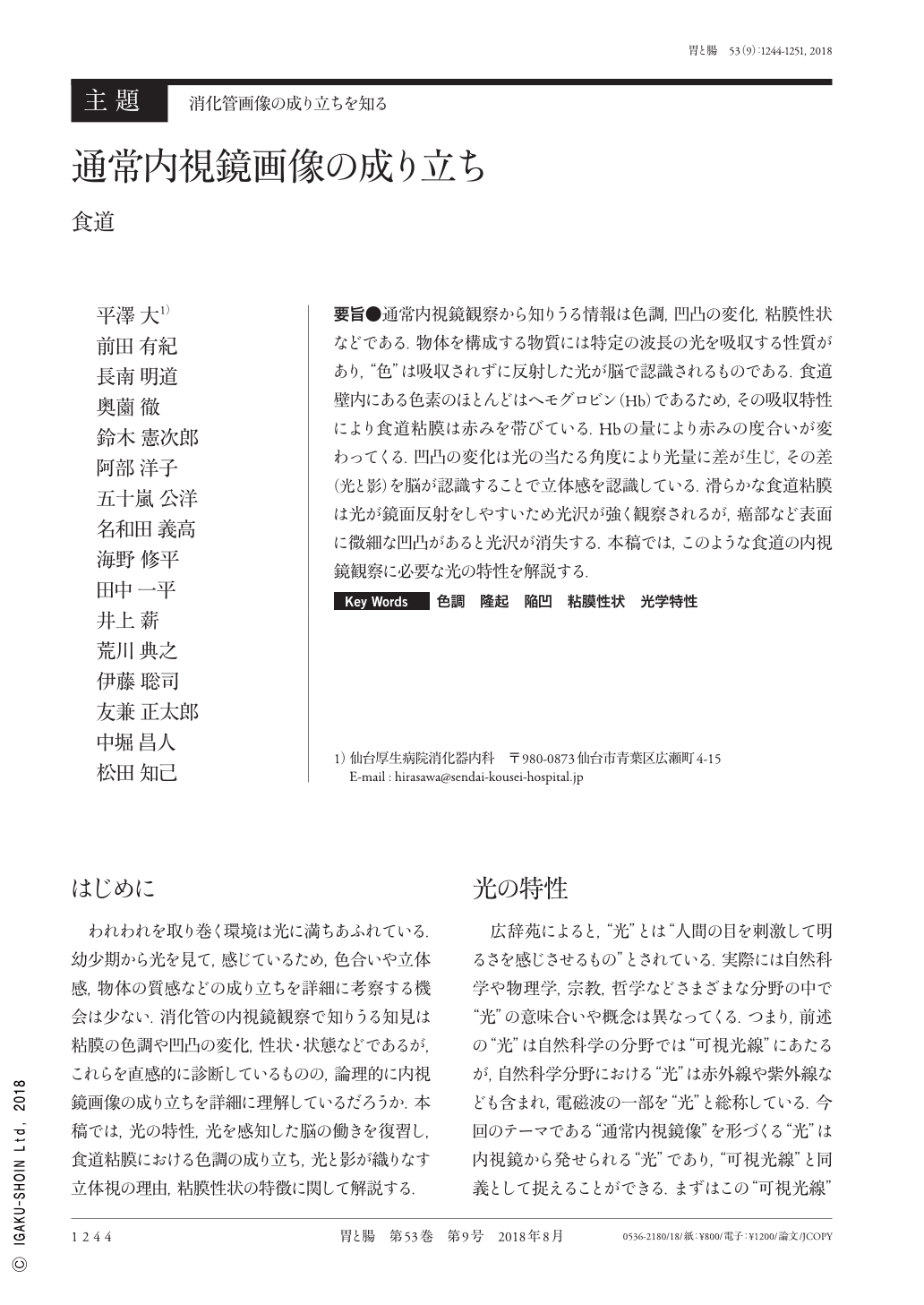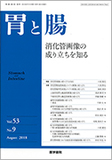Japanese
English
- 有料閲覧
- Abstract 文献概要
- 1ページ目 Look Inside
要旨●通常内視鏡観察から知りうる情報は色調,凹凸の変化,粘膜性状などである.物体を構成する物質には特定の波長の光を吸収する性質があり,“色”は吸収されずに反射した光が脳で認識されるものである.食道壁内にある色素のほとんどはヘモグロビン(Hb)であるため,その吸収特性により食道粘膜は赤みを帯びている.Hbの量により赤みの度合いが変わってくる.凹凸の変化は光の当たる角度により光量に差が生じ,その差(光と影)を脳が認識することで立体感を認識している.滑らかな食道粘膜は光が鏡面反射をしやすいため光沢が強く観察されるが,癌部など表面に微細な凹凸があると光沢が消失する.本稿では,このような食道の内視鏡観察に必要な光の特性を解説する.
Endoscopic examinations can provide information such as color tone, unevenness of the mucosal surface, and characteristics of the mucosa. Each substances that constitute an object have the particular property of absorbing light of certain wavelengths ; "color" is the light that is reflected without being absorbed and is recognized by the brain. Hb(hemoglobin)is responsible for most of the pigment within the esophageal wall ; therefore, the esophageal mucosa is reddish due to the light absorption characteristic of Hb. The degree of redness depends on the quantity of Hb within the target. The unevenness of the mucosal surface leads to a difference in the light intensity due to the difference in the angle at which the light falls. The brain recognizes such differences(light and shadow), thereby identifying the stereoscopic effects. The smooth esophageal mucosa is glossy because light can easily reflect ; however, the gloss disappears in the presence of fine irregularities on the mucosal surface, such as in cancer. In this article, we describe the characteristics of light necessary for the endoscopic examination of the esophagus.

Copyright © 2018, Igaku-Shoin Ltd. All rights reserved.


